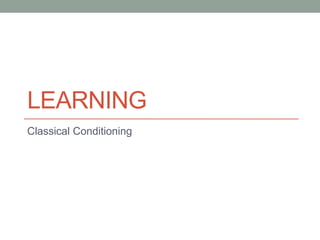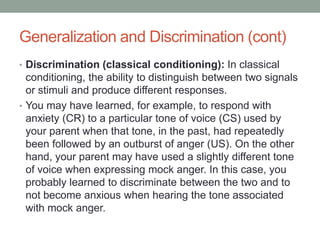Classical conditioning and operant conditioning are two types of learning. Classical conditioning involves learning through associations between stimuli, where a neutral stimulus becomes associated with an unconditioned stimulus and elicits the same response. Operant conditioning involves learning through consequences, where behaviors followed by reinforcement increase in frequency and behaviors followed by punishment decrease. Both types of learning shape behavior through repeated experiences and associations.






![US UR CS CR
• What is the Unconditioned Stimulus (US)?
• What is the Unconditioned Response (UR)?
• What is neutral stimulus? (This will later become the ___
stimulus).
• What is the Conditioned Stimulus (CS)?
• What is the Conditioned Response?
• [Notice that salivation can be either the UR or the CR, depending on
what stimulus led to the salivation.]](https://image.slidesharecdn.com/classicalconditioning-130513175138-phpapp01/85/Classical-conditioning-7-320.jpg)















